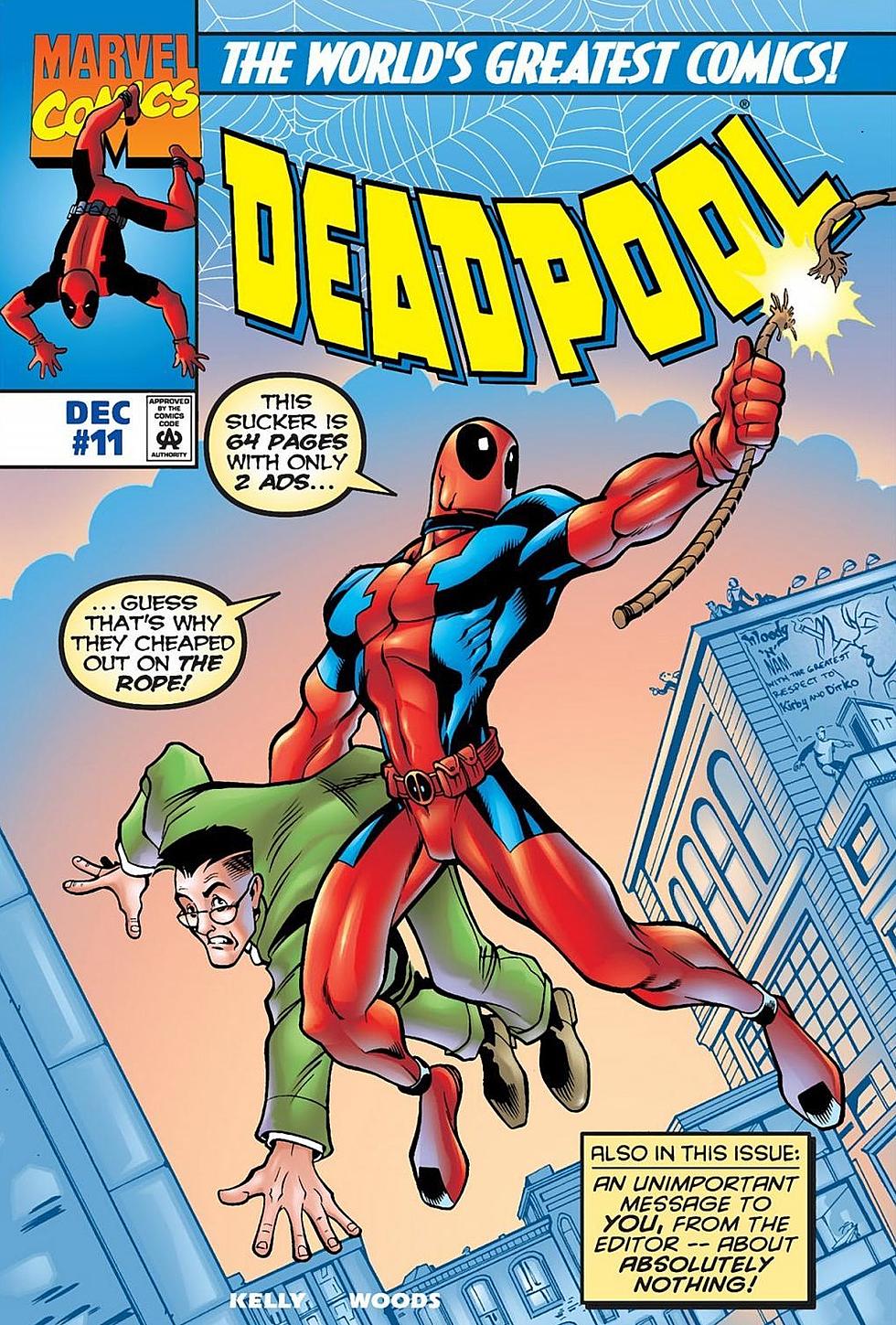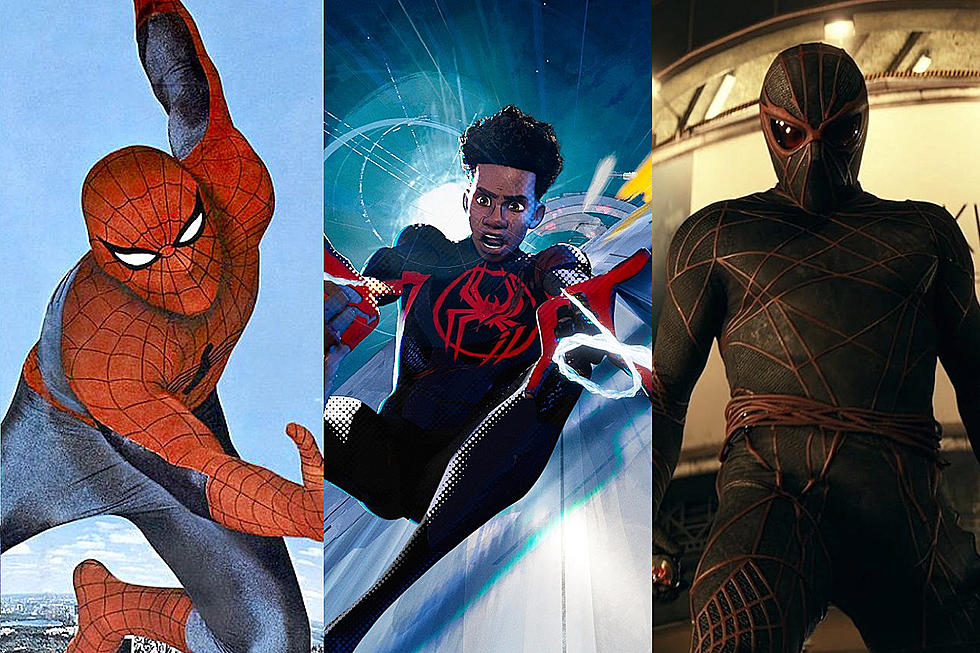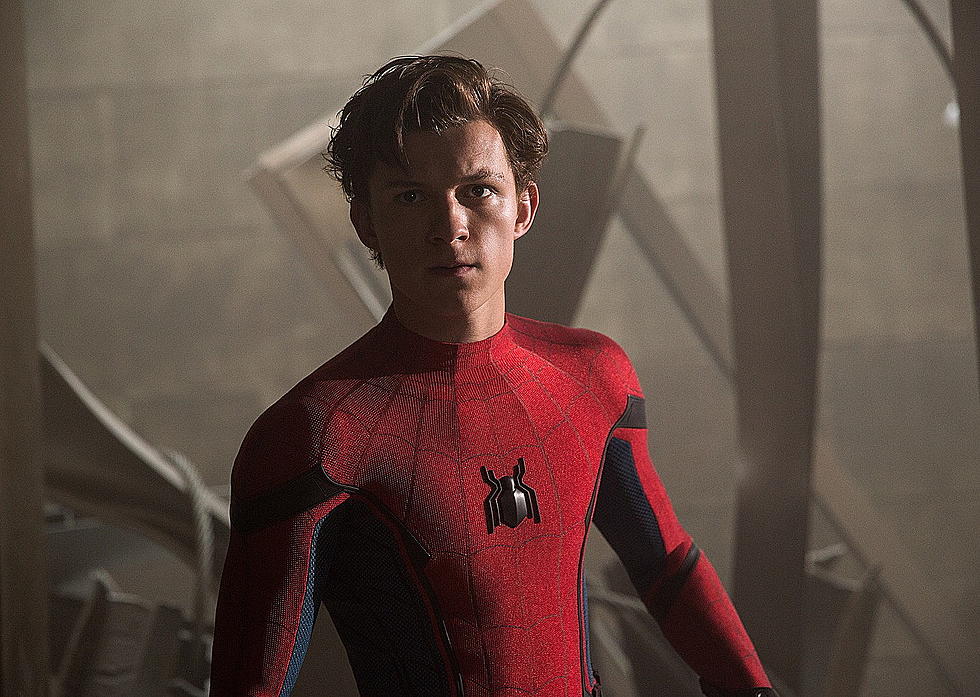
How Invading a Spider-Man Comic Cemented Deadpool’s Character
Over the past couple of decades, a narrative has built up around Deadpool's character evolution: He started out like any other mercenary, sword-carrying '90s badass, and it wasn't until the debut of his Joe Kelly-written and largely Ed McGuinness-drawn solo series in 1997 that the character came into his own.
I'd argue that it's not quite that cut-and-dry. Go back and read Deadpool's early X-Force appearances and you'll discover he was still a wisecracker, though a bit more mean-spirited. Where Deadpool really seemed to come into his own, though, was almost a year into his solo series, in an issue that would long be hailed as the best single-issue Deadpool story: Deadpool #11, written by Kelly, with art by Pete Woods.
Let's start with the cover, above. An homage to Amazing Fantasy #15, the first appearance of Spider-Man, it provides a quick clue that Deadpool will be standing in for our favorite wall-crawler here. That's important, and we'll get to it in a second. But before that, it's worth noting the speech balloons. This isn't the first cover in the series to feature Deadpool cracking wise, but it is arguably the first in which he speaks directly to the audience and addresses that he is a character in a comic book.
(Arguably he talks to the audience on the cover of issue #10, in which he says "You've gotta be kidding me!" while the Great Lakes Avengers stand behind him, but it's not as clear who he's talking to there.)
It would be another month or two before Deadpool would actually break the fourth wall on-panel inside a comic --- he does it in the Wizard-exclusive Deadpool #0 which came out a month after #11, if you count that --- but in the years following, Deadpool's tendency to acknowledge that he is in a comic book has become one of the core components of the character. With this cover, he became more Bugs Bunny than Wolverine. Or maybe it makes him Alfred E. Neuman.
The story of the issue revolves around Deadpool and his hostage/friend Blind Al unwittingly being sent back in time into the pages of 1967's Amazing Spider-Man #47. After accidentally knocking out Aunt May, Al takes her place and Deadpool uses an image inducer to make himself look like the guy in the pictures in her living room, Peter Parker. He goes on to fight Kraven the Hunter later in the issue.
It's a really clever conceit that pays off in several different ways. First, just look at how great Woods is at recreating John Romita Sr.'s art style. That's instant cred for any story you're trying to get across. And Kelly's goal is seemingly two fold: First, he's showing that Deadpool is just as funny and enjoyable as Marvel's flagship character, Spider-Man. He can stand in for him and get by. Deadpool had long been compared to Spider-Man already, because of the character design and his wisecracking. This issue embraced it, and to good effect.
Kelly and Woods also wisely pulled off another goal: Showing how Deadpool is not Spider-Man. The wisecracks are there, but they have a sharper edge. He uses a gun. He has swords. He's the amoral counterpoint to Spider-Man's lawful good.
And though Deadpool doesn't directly speak to the audience in the book's interior, he definitely establishes himself as a stand-in for a particular type of irony-minded reader. Yes, he's a participant in the story, but he's also a commentator. He's not just goofing around with villains, he's putting together a long internal monologue about how silly Norman and Harry Osborn's hair look:
This is similar to his propensity to breaking the fourth wall, but I'd categorize Deadpool's tendency to get inside his own head and go on a comedic rant about the character standing in front of him a little differently. This isn't Deadpool acknowledging he's a comic character; it's him saying things comic fans had joked about for years, but had never seen acknowledged on the page. (It took me a decade or two to figure out that the Osborns were supposed to have wavy hair, not just weird stripes.) It's a way to get a fan on Deadpool's side. He thinks like we do; he just happens to also shoot a lot of guns.
In the 18-plus years since the release of Deadpool #11, the character has changed and evolved even further. He's become more absurd, he's pushed the lines of how self-aware a comic character could or should be, he's crossed the line of being too mean occasionally, and he's been pulled back to the side of being a little more serious. Obviously, every creative team brings their own spin to the character.
But all the things that people like about Deadpool, all the stuff that makes him unique, everything that made him a breakout character, it's all there in Deadpool #11. By taking Spider-Man's place, Deadpool came into his own.
More From ComicsAlliance








![Ryan Browne And Pete Woods On Their Superhero Satire ‘Project Superpowers: Hero Killers’ [Interview]](http://townsquare.media/site/622/files/2017/03/Hero-Killers-Featured.png?w=980&q=75)
